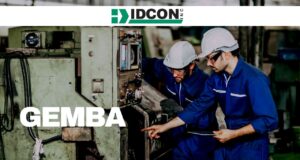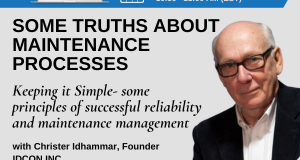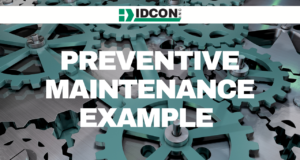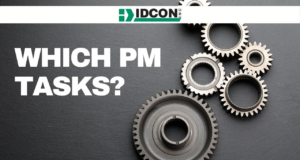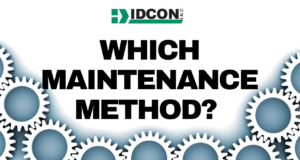Learn about protecting your planners so they can plan, basic elements of a standard job plan, and how to develop good job plans with these Practical Maintenance Planning Tips from IDCON Senior Consultant Leslie Skelly.
Read More »Tag Archives: reliability
Practical Maintenance Planning Tips
Check out these quick maintenance planning tips covering Planner roles, quality work orders, and field job scoping from Leslie Skelly, Senior Consultant with IDCON INC.
Read More »IDCON INC Reliability Tip: How to Use Root Cause Problem Elimination (RCPE) during Corrective Maintenance
Imagine you work in a mill as a mechanic and get a work order that states: Replace bearings on a press roll due to high vibration level. You complete the work and the damaged bearings and seals were replaced according to the plan. The machine was started up and is now producing paper again.
Read More »IDCON Reliability Tip: The Gemba of Reliability and Maintenance Management
"Gemba" is a Japanese word meaning the actual place where value is created, or where actions are executed. It includes Gemba walks to the actual place to observe, learn and improve work.
Read More »IDCON Reliability Tip: What’s That Noise in the Gear Reducer?
A key inspection for gear reducers is to listen for noise. The inspection should focus on a change in the sound.
Read More »Keeping it Simple – Some Principles of Successful Reliability and Maintenance Management
On April 20th at 10:30-11:00 AM (EST) in his second webinar in the “Keeping it Simple” series, Reliability and Maintenance Management expert Christer Idhammar gives you a glimpse into why “knowing why” is important in managing maintenance and how knocking bolts became the catalyst behind Christer’s philosophy. You’ll also learn some forgotten truths about managing maintenance processes. Join us through ...
Read More »How to Document Cost-Effective Maintenance Tasks Part 9: Preventive Maintenance Example
Catch up with Tor's latest installment in the series "How to Document Cost-Effective Preventive Maintenance" here.
Read More »Selecting the Right Preventive Maintenance Tasks
When it comes to existing PMs, the first thought is usually to search in the Computerized Maintenance Management System (CMMS). Of course, this is a valuable resource, but we may be missing other activity happening in departments of the plant, mill, or mine. It is very common that different crafts/departments have set up their own Preventive Maintenance Systems for components and equipment.
Read More »Choosing a Maintenance Method
In terms of Maintenance Methods, there are three choices for existing equipment. They are Operate to Breakdown, Fixed Time Maintenance, and Condition Based Maintenance. Operate to Breakdown: The equipment is run until it breaks down. Fixed Time Maintenance: The replacement of parts or equipment on a fixed/scheduled frequency. Condition Based Maintenance: The problem is found and fixed at the time when it is discovered. It is a common assumption that Condition Based Maintenance is always the most cost effective. While this is commonly the case, it is not always true.
Read More »Equipment Doesn’t Break Down, Components Do!
What is a component? IDCON uses the word “component” to describe an item that is highly repetitive for preventive maintenance purposes. For example, the AC motor on the infeed hydraulic unit is composed of several components or machine elements. The infeed hydraulic unit is a highly repetitive unit often found in paper mills, refineries, mines, etc. AC motors are a component that is reoccurring as well.
Read More » Paper 360
Paper 360



